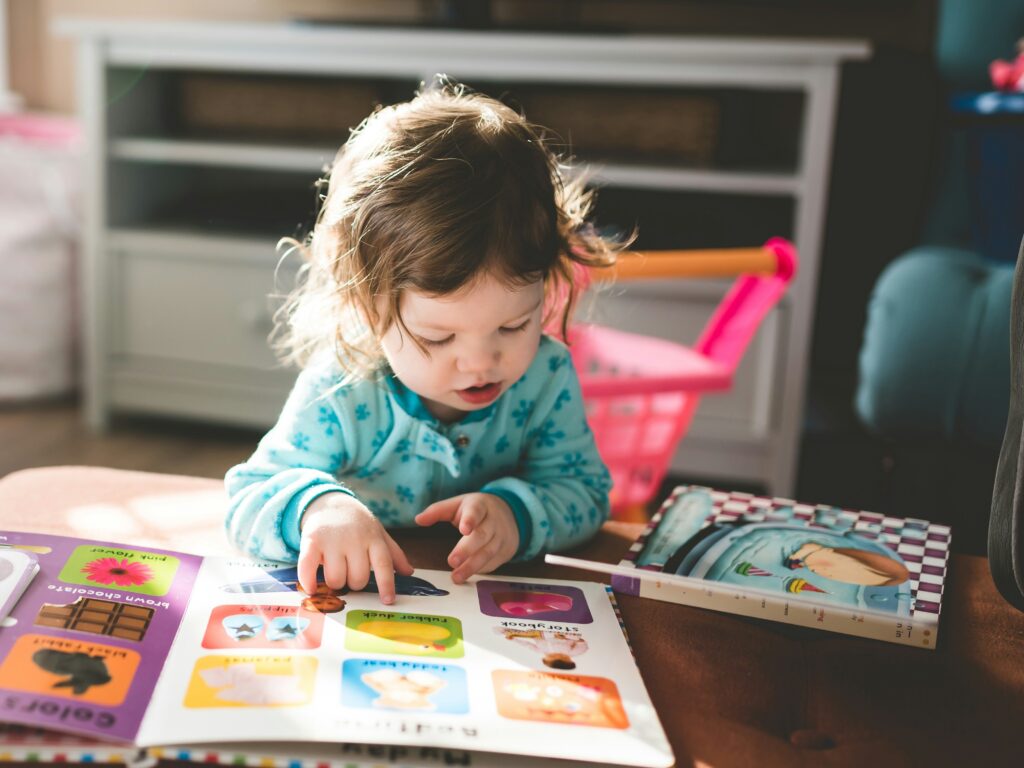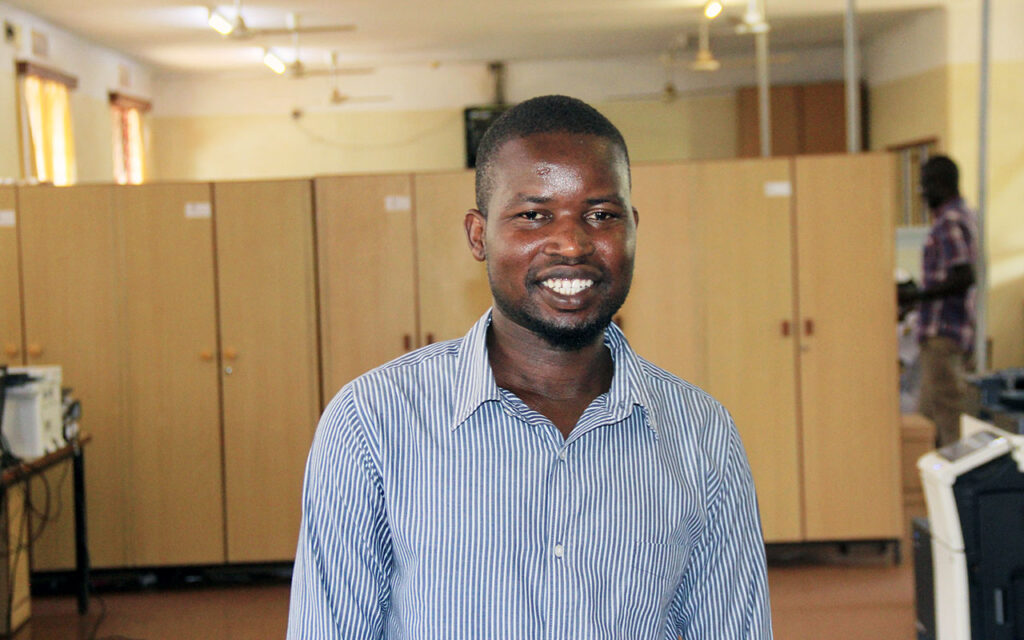Living a new normal: a mum’s experience of Type 3 von Willebrand disease
Anna discusses her experience of adapting to a different way of life following her daughter’s unexpected diagnosis with von Willebrand disease

Anna (a pseudonym*) lives with her husband and two children. Her daughter Isla* was six months old when she was unexpectedly diagnosed with Type 3 von Willebrand disease.
“She went down for her usual nap and when we went to check in on her, as we normally would, we noticed that there were huge clots of blood all over her crib,” Anna explains. “They were alarmingly big and it was obviously really shocking.”
Anna describes the scene as being “like something out of a horror movie”. Isla was bleeding from her mouth and the cause was unclear. Anna and her husband called an ambulance. By the time they reached the local hospital, Isla had lost so much blood that she needed a transfusion. She was then transferred to a larger hospital in London, where she began to bleed again.
“At that point, we still didn’t know what was going on or why this was happening, so it was very scary,” says Anna.
Tests concluded that Isla had Type 3 von Willebrand disease. After a week in hospital, during which she had a second blood transfusion and surgery to her mouth, she returned with her parents to a family home that had to adapt to a ‘new normal’.
Learning to live with Type 3
There are 12,020 people known to be living with von Willebrand disease in the UK, but only 200 with Type 3.* It’s the rarest and most severe type and is inherited when both parents have the von Willebrand’s gene. After Isla’s diagnosis, the rest of the family were tested – Anna, her husband and her son all have the gene, but only Isla is clinically affected.
Having Type 3 means Isla is prone to spontaneous bleeding. She has experienced numerous bleeds at home, mainly from her mouth and nose, and on new teeth coming through. Anna gives an example:
“On one occasion she had a nosebleed which wasn’t visible – so, no blood coming out of her nose, we just noticed that she was acting a bit unusual and very quiet. She woke up that night bleeding from her mouth because she’d been swallowing blood from her nose.”
At first, Isla was treated on-demand to stop the bleeding when it happened. Anna and her husband weren’t trained to administer Isla’s treatment at first, which meant visiting their local A&E department or the treatment centre whenever it was needed. Although it was much closer and more convenient than travelling into London, regular visits to A&E were unsettling.
“It was difficult because you see someone different every time and worry if the medicine is being administered correctly,” Anna explains. “It’s just not a nice environment to have to be in. It makes you feel like you haven’t got much control over the situation.”
Treating at home
Isla started prophylaxis to help prevent her bleeding. She now receives treatment every other day, as well as having treatment for any bleeds that happen. A port-a-cath device was fitted in Isla’s chest to help with administering treatment, and Anna and her husband attended training sessions with the care team so that they could treat her at home.
“It places us under much more control,” says Anna. “If Isla has an accident we can treat her immediately, without having to go to A&E.”
The flipside is that it can be both time-consuming and traumatic. Persuading a young child to accept having treatment that is essential but can be painful isn’t easy.
“She doesn’t like it, which is completely understandable,” Anna explains. “So, it does make a huge difference, being able to do treatment at home, but it’s a huge burden at the same time. Isla started off okay with it but then really resisted. At points we had to pin her down and it was just horrible, because she had to have it.”
Isla’s care team helped to ease that burden by continuing to treat her some of the time. Anna and her husband would take Isla to the treatment centre once a week for respite. “It just broke the week up a little bit,” says Anna. “I think it did help a fair amount because Isla is a bit better with it now. Instead of having treatment at home, sometimes every day, she got to see the nurses. I do feel well supported by the consultants and the team there.”
Uncertainty and unpredictability
Isla’s Type 3 von Willebrand disease diagnosis and the family’s journey towards living a ‘new normal’ has not been easy. For Anna, its impact and the uncertainty and unpredictability of her symptoms have been difficult to come to terms with.
“It’s a life-changing event, a seismic event. You’re given this diagnosis and then sort of sent home to live this new life,” she says.” I’d stay up every night because I couldn’t sleep because I was worried that at any given moment she could have a haemorrhage and potentially bleed to death without intervention. And there’s also the trauma from when she was in hospital prior to the diagnosis, having seen her in such a terrible way.
“It sounds a bit dramatic, but Isla’s illness completely consumes me and my husband and our family. It consumes me every minute of every day, it doesn’t leave my head or my thoughts. I’m constantly anxious. The problem with this disease is that you don’t know how each day could unfold.
“And also just coping with the fact that von Willebrand’s is not curable, it’s only treatable. With Isla’s prophylaxis, there’s no end to it. It’s not a few months’ treatment and then it stops; it’s almost every day for the rest of her life, currently.”
Anna and her husband were offered psychological support via Isla’s treatment centre but felt unable to connect with the person she saw. “The psychologists were in their early twenties and I didn’t feel like that person would have enough life experience to be able to help me,” she explains. She is now receiving therapy privately.
Connection and understanding
Since Isla’s diagnosis, Anna has tried to learn as much as she can about von Willebrand’s. She has a good relationship with the care team, often speaking with the nurses and consultants to keep up to date, and recently attended a patient conference on von Willebrand disease. “I felt it was very important to attend, just to be a part of it and hear what’s going on,” she says.
Social media has also been useful, though not without provoking a sense of fear. “On the von Willebrand’s forums the stories can be very scary, but at the same time I want to prepare myself for all eventualities,” says Anna.
More positively, social media has enabled her to connect with others affected by von Willebrand’s. This includes a new friendship with a family who have a daughter who also has Type 3. Sharing stories with someone who understands because they’ve been through it themselves has been beneficial for everyone. “Their daughter is a little bit older and they’re able to share their experiences with us,” says Anna. “They’re actually very similar. It seems like most people with Type 3 find out in a very traumatic way.”
That sense of shared experience and understanding is important for Anna, who has found that lack of awareness about von Willebrand’s means it’s hard for people to appreciate what Isla’s diagnosis means.
“People look at her and they think she’s okay because visually she looks like any other child,” she says. “People often ask me ‘Will she grow out of it?’ and I have to explain no, she absolutely won’t. I mean, I sort of knew about haemophilia prior to this, but I didn’t realise the extent of the impact it has on a person’s life.”
Taking it day by day
Looking to help raise awareness and connect with more families, Anna is now involved with the VWD Alliance, an organisation for people affected by von Willebrand’s that Haemnet is working with.
“It’s going to be a community, providing a hub or support system for people with von Willebrand’s,” Anna explains. “I suppose once you get diagnosed, it can be a place to look and seek support and comfort from others. It would be great to be able to give that to somebody else.”
When asked what she would say to other parents of children newly diagnosed with Type 3 von Willebrand disease, Anna says:
“It is life-changing and it is a huge shock, but it will become your normal and it will become less scary. I think you have to take it day by day. Just focus on now and what you can do best for your child to lead as normal a life as they possibly can. As harsh as it sounds, you have to just try and find the strength to plough through it.”
* Figures from UKHCDO 2024 Annual Report & Bleeding Disorder Statistics for the Financial Year 2023/24
With our thanks to Anna for sharing her story with us
Further information
A number of patient organisations and charities provide support and advocacy for people with bleeding disorders and their families. In the UK these include:
- The Haemophilia Society
- Haemophilia Scotland
- Haemophilia Wales
- Haemophilia Northern Ireland
- Local families with bleeding disorders
- The VWD Alliance
To find out more about how Haemnet works with the bleeding disorders community, get in touch: hello@haemnet.com
VWD360
Haemnet is currently researching what it’s like to live with von Willebrand disease. Further information is available here.
Image: Stephen Andrews on Unsplash


